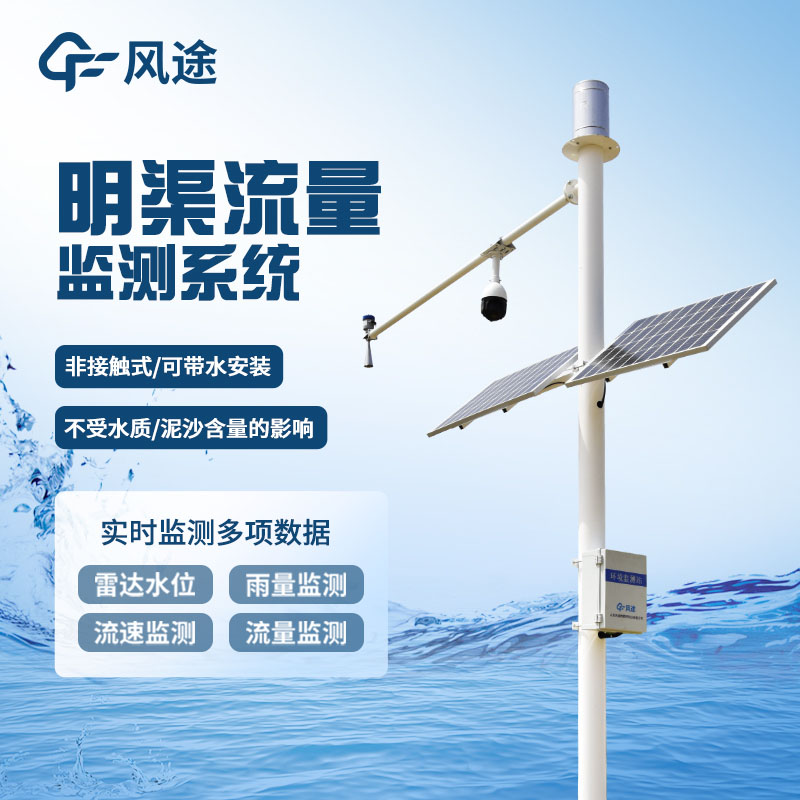You often see open waterways in the open air. Their scientific name is "open channel", formally defined as a channel with unpressurized flow. Examples include irrigation canals in farmland, drainage ditches in cities, landscape rivers in parks, and natural rivers and streams.
There are practical reasons for measuring open channel flow, which refers to "the speed and quantity of water flowing in the channel", such as how many cubic meters of water pass through in one second. Here are specific scenarios:
Irrigation canals: Knowing the flow rate helps agricultural workers calculate the optimal water volume per mu of land, preventing over-irrigation (which damages crops) or under-irrigation (which causes drought), thus saving water resources.
Urban drainage ditches: During rain, if the flow rate is too low, water accumulates; if too high, it may indicate blockages or heavy rainfall, requiring early warnings to prevent street flooding.
Natural channels (rivers and streams): Measuring flow helps authorities assess water availability—e.g., the risk of drought-induced flow interruption or whether industrial pollution overburdens the water, threatening aquatic life—all to protect the hydrological ecosystem.
How Does a Doppler Open Channel Flow Monitor Work?
1. How Does It Measure Flow Velocity?
Similar to police radar for speed detection, the device emits ultrasonic waves (high-frequency sounds inaudible to humans) toward the water. Sediment, leaves, and other particles in the water reflect these waves. Faster flow causes a higher frequency shift in the reflected waves, while slower flow causes a lower shift—this is the Doppler effect. For example, an ambulance siren sounds sharper (higher frequency) when approaching and duller when moving away. The device calculates flow velocity by analyzing these frequency changes.
2. How Is Total Flow Calculated from Velocity?
Velocity (e.g., 3 m/s) must be combined with the channel’s cross-sectional area. For a rectangular channel 2 m wide and 1 m deep, the area is 2×1=2 m². Flow is calculated as:
Flow = Velocity × Cross-Sectional Area.
Example: 3 m/s × 2 m² = 6 m³/s (6 tons of water flow per second).
3. How Does the Doppler Monitor Operate?
Take the FT-ML1 as an example. It is a "composite system":
Ultrasonic probe (velocity meter): Installed beside or in the channel, emitting ultrasonic waves to calculate flow speed.
Water level sensor (ruler): Measures water depth, which—combined with channel width and shape—determines the cross-sectional area.
Host computer (calculator): Automatically computes flow using the velocity and area, transmitting real-time data to mobile devices or computers via 4G.
4. Why Choose Doppler Monitoring Over Traditional Methods?
Traditional methods (e.g., manual depth measurement with rulers or float-based velocity estimation) were slow and inaccurate. Doppler monitors offer advantages like an "automatic medical scanner":
Precision: Minimal error, replacing imprecise manual tools with electronic accuracy.
Unattended operation: Works 24/7, unaffected by rain or darkness.
Intelligence: Stores data and triggers alerts—e.g., notifying flood control staff when flow surges due to heavy rain.
In summary, a Doppler open channel flow monitor acts as a "smart speedometer" for channels: it calculates flow velocity via ultrasonic waves, determines cross-sectional area based on channel dimensions, and computes flow using simple multiplication. With fully automated and precise operations, it outperforms manual measurements, proving indispensable for urban drainage and river monitoring.
This translation maintains the technical clarity and analogical explanations of the original text, ensuring professional accuracy while enhancing readability for English readers. Key terms like "Doppler effect" and "cross-sectional area" are highlighted for clarity, and practical examples are preserved to illustrate concepts.

Article address:https://www.sqqx.net/en/news/669.html

 +86 15898932201
+86 15898932201



